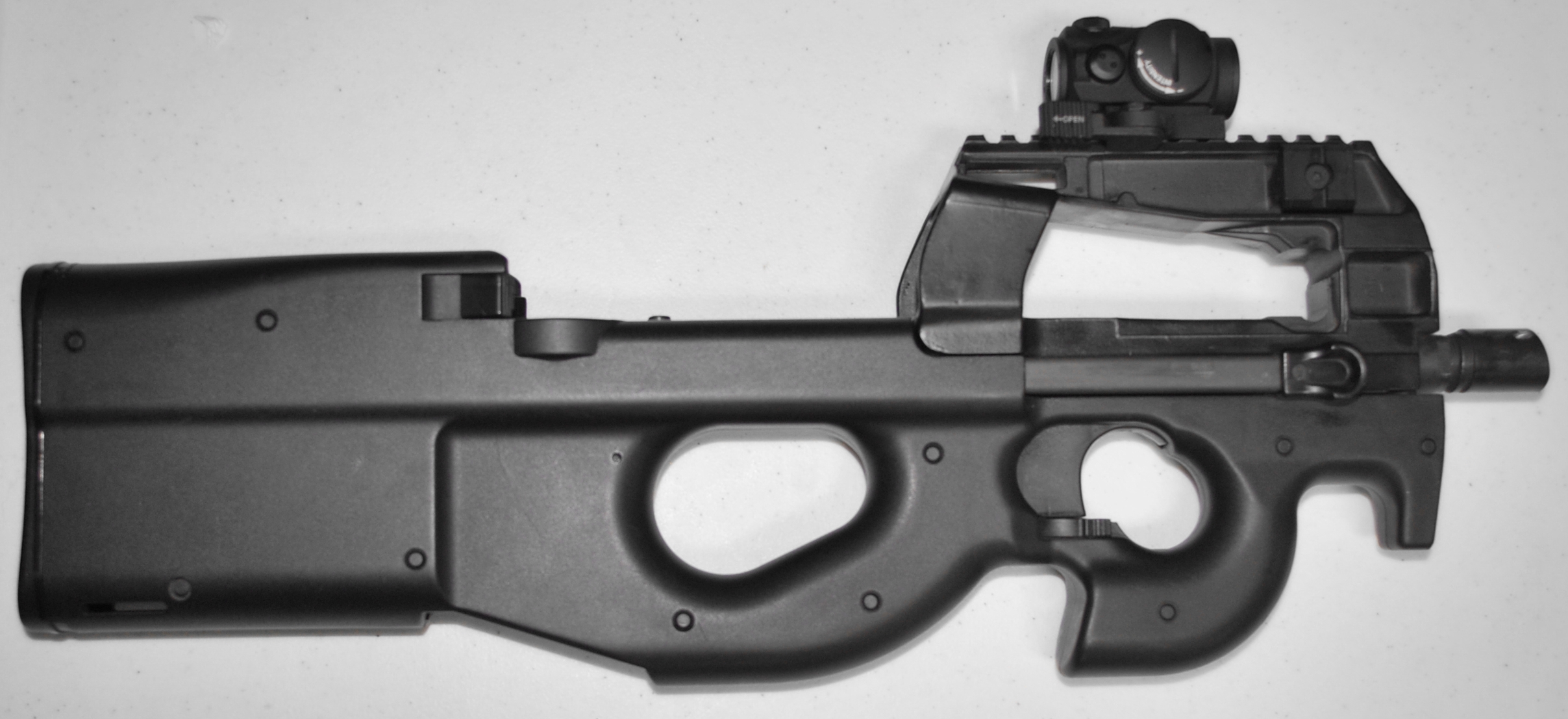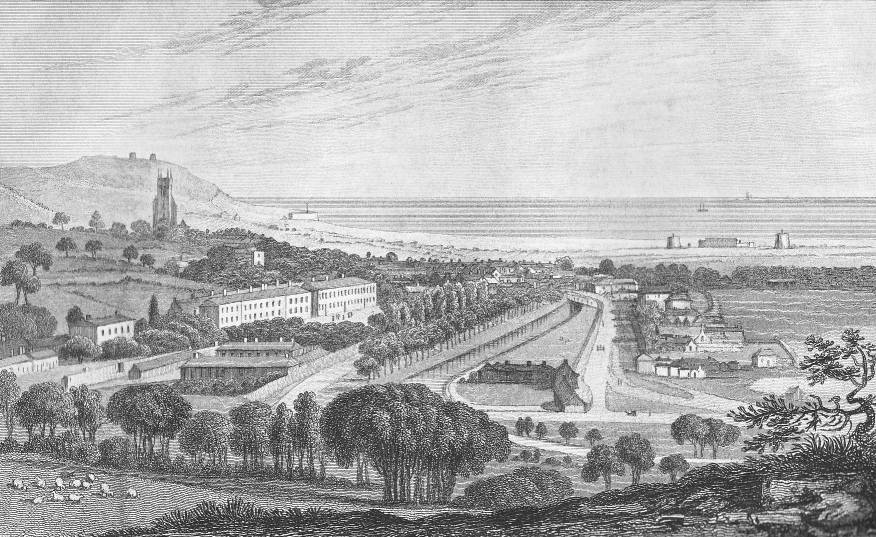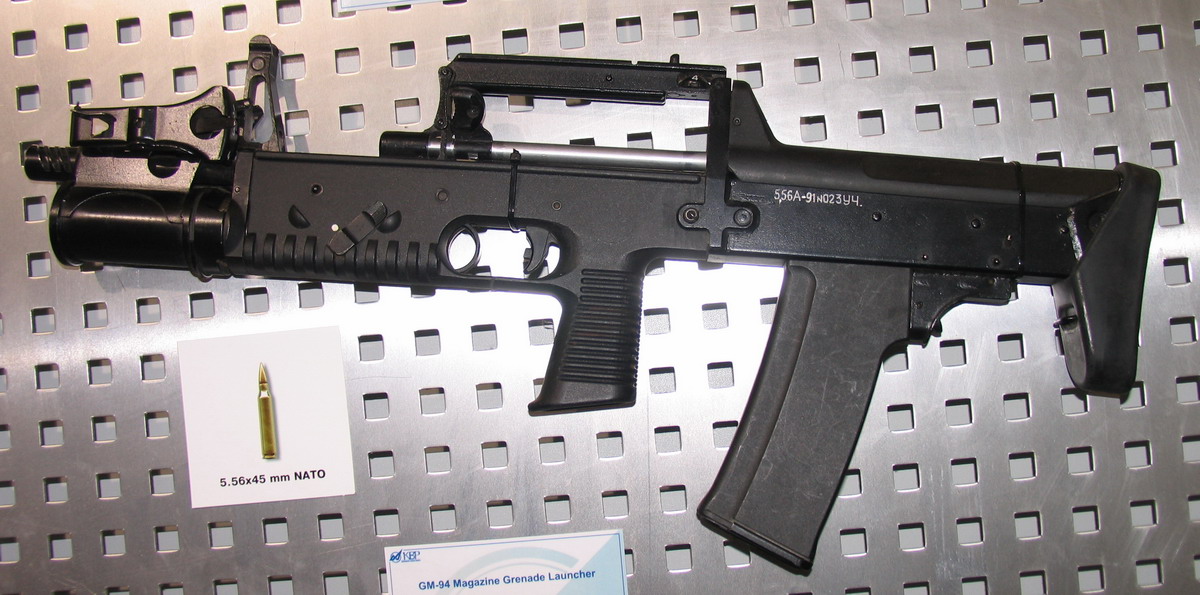|
Thorneycroft Carbine
The Thorneycroft carbine was one of the earliest bullpup rifles, developed by an English gunsmith in 1901 as patent No. 14,622 of July 18, 1901. This bolt-action rifle featured a bullpup action in which the retracted bolt slid back through the stock nearly to the shooter's shoulder, maximising the space available in the body of the firearm. The rifle was chambered in the contemporary .303 British (7.7 mm) service cartridge, and held five rounds in an internal magazine. The Thorneycroft was shorter and 10% lighter than the standard Lee–Enfield rifle used by the British military at the time. However, when tested at Hythe the firearm exhibited excessive recoil and poor ergonomics, and was not adopted for military service. See also * List of bullpup firearms The following is a list of firearms designed in a bullpup (i.e., action behind firecontrol/trigger group) configuration. References {{Bullpup Firearms, Rifles=Pindad SS2 Bullpup Bullpup firearms A bul ... [...More Info...] [...Related Items...] OR: [Wikipedia] [Google] [Baidu] |
Bullpup
A bullpup firearm is one with its firing grip located in front of the Chamber (firearms), breech of the weapon, instead of behind it. This creates a weapon with a shorter overall length for a given barrel length, and one that is often lighter, more compact, concealable and more maneuverable than a conventionally configured firearm. Where it is desirable for troops to be issued a more compact weapon, the use of a bullpup configuration allows for barrel length to be retained, thus preserving muzzle velocity, range and ballistic effectiveness. The bullpup concept was first tested militarily in 1901 with the British Thorneycroft carbine, but it was not until the Cold War that more successful designs and improvements led to wider adoption. In 1977, the Austrian Army became the first military force in the world to adopt a bullpup rifle, the Steyr AUG, as a service rifle, principal combat weapon. Since then the militaries in many countries have followed suit with other bullpup design ... [...More Info...] [...Related Items...] OR: [Wikipedia] [Google] [Baidu] |
Bolt-action Rifle
Bolt-action is a type of manual firearm action that is operated by ''directly'' manipulating the bolt (firearms), bolt via a cocking handle, bolt handle, which is most commonly placed on the right-hand side of the weapon (as most users are right-handed). Most bolt-action firearms use a rotating bolt design, where the handle must first be rotated upward to unlock the bolt from the receiver (firearms), receiver, then pulled back to open the breech-loading weapon, breech and allowing any spent cartridge case to be extracted and ejected. This also cocks the firing pin, striker within the bolt (either on opening or closing of the bolt depending on the gun design) and engages it against the sear (firearm), sear. When the bolt is returned to the forward position, a new cartridge (firearms), cartridge (if available) is pushed out of the magazine (firearms), magazine and into the gun barrel, barrel chamber (firearms), chamber, and finally the breech is closed tight by rotating the h ... [...More Info...] [...Related Items...] OR: [Wikipedia] [Google] [Baidu] |
303 British
The .303 British (designated as the 303 British by the C.I.P. and SAAMI) or 7.7×56mmR, is a calibre rimmed rifle cartridge. The .303 inch bore diameter is measured between rifling lands as is the common practice in Europe which follows the traditional black powder convention. It was first manufactured in Britain as a stop-gap black powder round put into service in December 1888 for the Lee–Metford rifle. From 1891 the cartridge used smokeless powder which had been the intention from the outset, but the decision on which smokeless powder to adopt had been delayed. It was the standard British and Commonwealth military cartridge for rifles and machine guns from 1889 until the 1950s when it was replaced by the 7.62×51mm NATO. Cartridge specifications The .303 British has 3.64 ml (56 grains H2O) cartridge case capacity. The pronounced tapering exterior shape of the case was designed to promote reliable case feeding and extraction in bolt-action rifles and machine guns a ... [...More Info...] [...Related Items...] OR: [Wikipedia] [Google] [Baidu] |
Bolt-action
Bolt-action is a type of manual firearm action that is operated by ''directly'' manipulating the bolt via a bolt handle, which is most commonly placed on the right-hand side of the weapon (as most users are right-handed). Most bolt-action firearms use a rotating bolt design, where the handle must first be rotated upward to unlock the bolt from the receiver, then pulled back to open the breech and allowing any spent cartridge case to be extracted and ejected. This also cocks the striker within the bolt (either on opening or closing of the bolt depending on the gun design) and engages it against the sear. When the bolt is returned to the forward position, a new cartridge (if available) is pushed out of the magazine and into the barrel chamber, and finally the breech is closed tight by rotating the handle down so the bolt head relocks on the receiver. Bolt-action firearms are generally repeating firearms, but some single-shot breechloaders also use bolt-action design as ... [...More Info...] [...Related Items...] OR: [Wikipedia] [Google] [Baidu] |
Iron Sight
Iron sights are a system of physical alignment markers (usually made of metallic material) used as a sighting device to assist the accurate aiming of ranged weapons (such as a firearm, airgun, crossbow or even compound bow), or less commonly as a primitive finder sight for optical telescopes. The earliest sighting device, it relies completely on the viewer's naked eye (mostly under ambient lighting), and is distinctly different to optical sights such as telescopic sights, reflector (reflex) sights, holographic sights and laser sights, which make use of optical manipulation and/or active illumination, as well as the newer optoelectronics, which use digital imaging and even incorporate augmented reality. Iron sights are typically composed of two components mounted perpendicularly above the weapon's bore axis: a rear sight nearer (or ''proximally'') to the shooter's eye, and a front sight farther forward (or ''distally'') near the muzzle. During aiming, the shooter aligns his/ ... [...More Info...] [...Related Items...] OR: [Wikipedia] [Google] [Baidu] |
Bullpup
A bullpup firearm is one with its firing grip located in front of the Chamber (firearms), breech of the weapon, instead of behind it. This creates a weapon with a shorter overall length for a given barrel length, and one that is often lighter, more compact, concealable and more maneuverable than a conventionally configured firearm. Where it is desirable for troops to be issued a more compact weapon, the use of a bullpup configuration allows for barrel length to be retained, thus preserving muzzle velocity, range and ballistic effectiveness. The bullpup concept was first tested militarily in 1901 with the British Thorneycroft carbine, but it was not until the Cold War that more successful designs and improvements led to wider adoption. In 1977, the Austrian Army became the first military force in the world to adopt a bullpup rifle, the Steyr AUG, as a service rifle, principal combat weapon. Since then the militaries in many countries have followed suit with other bullpup design ... [...More Info...] [...Related Items...] OR: [Wikipedia] [Google] [Baidu] |
Rifle
A rifle is a long-barreled firearm designed for accurate shooting, with a barrel that has a helical pattern of grooves ( rifling) cut into the bore wall. In keeping with their focus on accuracy, rifles are typically designed to be held with both hands and braced firmly against the shooter's shoulder via a buttstock for stability during shooting. Rifles are used extensively in warfare, law enforcement, hunting, shooting sports, and crime. The term was originally ''rifled gun'', with the verb ''rifle'' referring to the early modern machining process of creating groovings with cutting tools. By the 20th century, the weapon had become so common that the modern noun ''rifle'' is now often used for any long-shaped handheld ranged weapon designed for well-aimed discharge activated by a trigger (e.g., personnel halting and stimulation response rifle, which is actually a laser dazzler). Like all typical firearms, a rifle's projectile (bullet) is propelled by the contained def ... [...More Info...] [...Related Items...] OR: [Wikipedia] [Google] [Baidu] |
Bolt Action
Bolt-action is a type of manual firearm action that is operated by ''directly'' manipulating the bolt via a bolt handle, which is most commonly placed on the right-hand side of the weapon (as most users are right-handed). Most bolt-action firearms use a rotating bolt design, where the handle must first be rotated upward to unlock the bolt from the receiver, then pulled back to open the breech and allowing any spent cartridge case to be extracted and ejected. This also cocks the striker within the bolt (either on opening or closing of the bolt depending on the gun design) and engages it against the sear. When the bolt is returned to the forward position, a new cartridge (if available) is pushed out of the magazine and into the barrel chamber, and finally the breech is closed tight by rotating the handle down so the bolt head relocks on the receiver. Bolt-action firearms are generally repeating firearms, but some single-shot breechloaders also use bolt-action design as ... [...More Info...] [...Related Items...] OR: [Wikipedia] [Google] [Baidu] |
Lee–Enfield Rifle
The Lee–Enfield or Enfield is a bolt-action, magazine-fed repeating rifle that served as the main firearm of the military forces of the British Empire and Commonwealth during the first half of the 20th century, and was the British Army's standard rifle from its official adoption in 1895 until 1957. The WWI versions are often referred to as the "SMLE", which is short for the common "Short, Magazine, Lee–Enfield" variant. A redesign of the Lee–Metford (adopted by the British Army in 1888), the Lee–Enfield superseded the earlier Martini–Henry, Martini–Enfield, and Lee-Metford rifles. It featured a ten-round box magazine which was loaded with the .303 British cartridge manually from the top, either one round at a time or by means of five-round chargers. The Lee–Enfield was the standard issue weapon to rifle companies of the British Army, colonial armies (such as India and parts of Africa), and other Commonwealth nations in both the First and Second World Wars (such a ... [...More Info...] [...Related Items...] OR: [Wikipedia] [Google] [Baidu] |
Hythe, Kent
Hythe () is a coastal market town on the edge of Romney Marsh, in the district of Folkestone and Hythe on the south coast of Kent. The word ''Hythe'' or ''Hithe'' is an Old English word meaning haven or landing place. History The town has mediaeval and Georgian buildings, as well as a Saxon/Norman church on the hill and a Victorian seafront promenade. Hythe was once defended by two castles, Saltwood and Lympne. Hythe Town Hall, a neoclassical style building, was completed in 1794. Hythe's market once took place in Market Square (now Red Lion Square) close to where there is now a farmers' market every second and fourth Saturday of the month. Hythe has gardening, horse riding, bowling, tennis, cricket, football, squash and sailing clubs. Lord Deedes was once patron of Hythe Civic Society. As an important Cinque Port Hythe once possessed a bustling harbour which, over the course of 300 years, has now disappeared due to silting. Hythe was the central Cinque Port, sitting bet ... [...More Info...] [...Related Items...] OR: [Wikipedia] [Google] [Baidu] |
List Of Bullpup Firearms
The following is a list of firearms designed in a bullpup (i.e., action behind firecontrol/trigger group) configuration. References {{Bullpup Firearms, Rifles=Pindad SS2 Bullpup Bullpup firearms A bullpup firearm is one with its firing grip located in front of the breech of the weapon, instead of behind it. This creates a weapon with a shorter overall length for a given barrel length, and one that is often lighter, more compact, con ... * ... [...More Info...] [...Related Items...] OR: [Wikipedia] [Google] [Baidu] |
Bolt-action Rifles Of The United Kingdom
Bolt-action is a type of manual firearm action that is operated by ''directly'' manipulating the bolt via a bolt handle, which is most commonly placed on the right-hand side of the weapon (as most users are right-handed). Most bolt-action firearms use a rotating bolt design, where the handle must first be rotated upward to unlock the bolt from the receiver, then pulled back to open the breech and allowing any spent cartridge case to be extracted and ejected. This also cocks the striker within the bolt (either on opening or closing of the bolt depending on the gun design) and engages it against the sear. When the bolt is returned to the forward position, a new cartridge (if available) is pushed out of the magazine and into the barrel chamber, and finally the breech is closed tight by rotating the handle down so the bolt head relocks on the receiver. Bolt-action firearms are generally repeating firearms, but some single-shot breechloaders also use bolt-action design as a ... [...More Info...] [...Related Items...] OR: [Wikipedia] [Google] [Baidu] |











